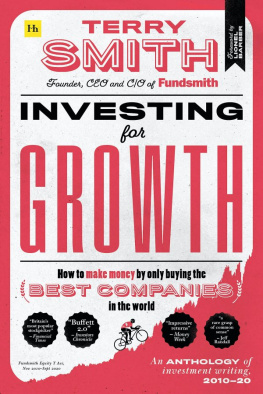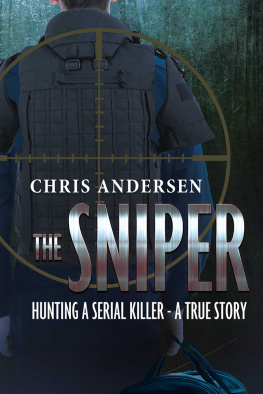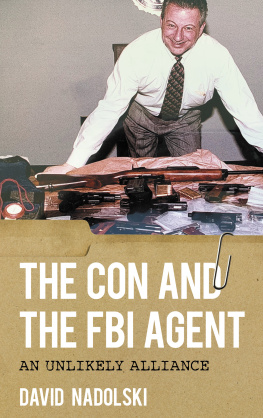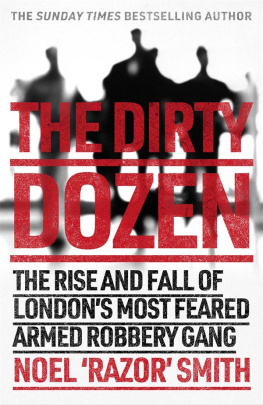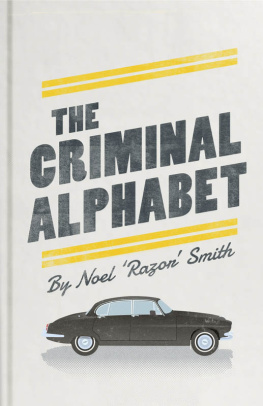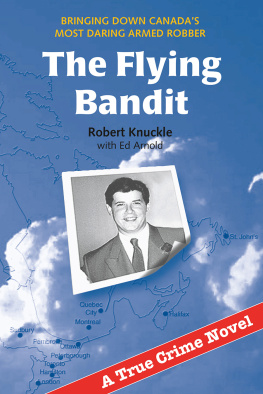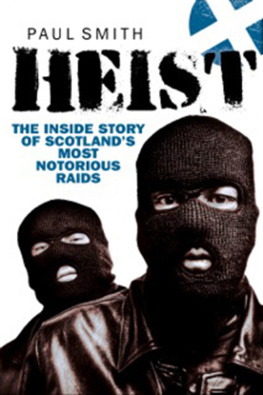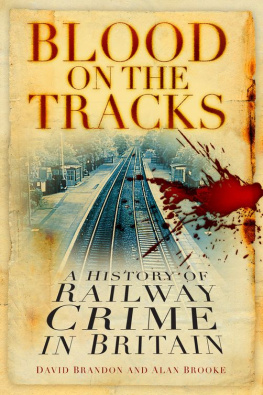I would like to thank my immediate and extended family, for filling my life with so much joy in their own special ways: Tracey and Sonny; Tel Boy and Marissa; Bradley and Nikki; Jade, Shariff and Abdullah; Iris and Pat; Suzy and Linda; Patsy and Boozie; Jonathan, Jessica and Maisy; Iris, Paul, Alec, Thomas and Olivia; Johnny, Val and family; Fred, Marie and family; Jimmy, Betty and family; Frank, Joyce and family; Leonard Senior, Lenny, LJ, Audrey, Ray, Billy and Carly; Tony, Janice and family; Derek and family.
I would also like to thank the following people (in no particular order) who, in their own various ways, have played a significant role in my development as a true crime writer and consultant:
My publisher and friend Cass Pennant; David Glover; Rudolph Herzog; Oliver, Liza and especially Yvonne Bainton at Windfall Films, who proved invaluable; Geoff Deehan; Paul Buck; Paul Woods; Chris at Apex; Jim Dawkins; Jack Upson.
Also thanks to Mark, Annette, Cassius Blake and family, and all the fabulous people in Cambridge; Dean, Christine and family and friends in Wisbech; Peter Welch and family; Tony and Mandy; Martin and Kim Bowers, and their families; George and Maggie; Kane and Jo; Robert and Lisa; Tony, Kim and family; Jimmy and Donna; Frank and Queenie; Gary and Sharon Topsfield, and family; Andy and Doreen Rowlands; Harry, Oliver, Lee and the crew at Shores of London; John, Gina, Sonny, Jay and Remi Laveve; Brian Richardson and family; Howard and Toni Prosser; Ivy and family; Tony and Peter Colson; Patsy and Mabel Feeley; Roy Shaw; Joey Pyle; Richard @ Lanmere; Peter and Sue Mitchell; Danny, Tina and family; Nelson and Amber; Dave and Mikki; Steve and Debbie; Steve and Lesley; Ian and Jo; Michael Cole; George and family; Michael and Joe; Karen, Dave and family.
To those in the Big House: Charlie Bronson; Billy Todd; Nozzer; Angelo; Razor Smith; Chris Pearman; Rooky; Mr Kim; Danny Clark; Porky Hunt; Paul Marsh; Del White, and all the lads at Belmarsh.
Special thanks to: Aziz Rahman; Jonathan Lennon; Leonard Smith QC; Darryl Lockwood.
And finally, I would like to thank God the Almighty. Whoever you are, wherever you are, I sense that you are with me.
I n the summer of 2007 I received an email from the newest and most exciting publisher on the block, Cass Pennant, who invited me to join his growing team of writers and become a part of the Pennant Crime series. At the time I was already working on several true crime projects involving my specialist subject, armed robbery and those who have participated in it.
Then, in January 2008, Cass called me to say he wanted me to write a book about the worlds best blags, a kind of warts-and-all account and analysis of the worlds greatest and worst armed robberies. I pointed out that Britain itself possesses a fascinating history of such dramatic crimes committed over the last fifty years.
I also stressed that, unlike orthodox journalists who suck up to the authorities for their primary source material, I would be drawing upon my firsthand knowledge and experience of crime, the British judicial system, long-term imprisonment and life as a fugitive. This would not only qualify me to write about Britains boldest blags, but also enable me to assess and evaluate both the ingenuity and the flaws inherent in these crimes. More significantly on a personal level, I have often had the privilege to meet and socialise with some of those associated with these legendary armed robberies.
I would like to state from the very outset that the aim of this book is neither to praise nor criticise those who committed the crimes, but to look closely at what went right or wrong when the heists were planned and executed. For critics or cynics wont to accuse this book of promoting criminal methods and techniques, it should also be stressed that all the primary research material used herein has been, at sometime or other, in the public domain. I have, however, digested all the facts in order to give my own personal perspective.
As a modern robbologist someone who studies the science and methodology of robbery I know that robbery has been with us since the dawn of time. One can imagine the first serious offence of robbery occurring when a caveman clumped his fellow troglodyte over the head with a cudgel to steal his supper. Then, as man developed and evolved over the centuries, the notion of physically stealing personal property, dwellings, land and even entire countries became de rigueur amongst the belligerent colonialists of yesteryear. Hence one mans seemingly legal expropriation of land and property is anothers brutal, barefaced robbery.
A more contemporary definition of robbery and robbers can be found in the excellent book Armed Robbery by Roger Matthews, professor of criminology. In the text he states that armed robbers fall into three broad categories: amateur, intermediate and professional.
Understandably, amateur robbers form the largest group as they adopt a spontaneously haphazard, opportunistic approach to crime and are often motivated by desperation. Amateurs frequently act alone and exhibit little or any organisational skill. A typical amateur robber carries out the crime under the influence of drink or drugs in order to settle debts. Such novices generally leave a string of attempted or failed robberies in their wake, committed with poor disguises and imitation firearms, gravitating toward vulnerable targets. Upon capture, a deep sense of embarrassment at their incompetence and the small amount of money taken is a predominant response.
On the other hand, the intermediate robbers also form a substantive group. Having been taught the game by more experienced robbers or by dint of a series of short prison sentences, they are generally more organised. Frequently engaging in a reasonable level of planning, they also tend to work in small groups of three to five individuals, and are more prepared to carry or use a real firearm. Under close examination, however, this disparate group can be subdivided into two further categories, the criminal diversifiers and criminal developers.
Ostensibly, the diversifiers are sporadic blaggers with a long history of criminal involvement who dabble in a number of more general crimes, such as burglary, car theft, ram-raiding and drug dealing. Invariably, this type of semiprofessional robber only becomes active when provided with information about a specific target or invited to participate in a crime planned by others. In many respects, the diversifier is a general purpose criminal who becomes elusively difficult to identify by the very fact that he is governed by opportunity and circumstance. Conversely, however, this freelance approach is perilous as, once under police surveillance for lesser offences, he can contaminate an otherwise sterile group.
As for the intermediate developers, these are robbers in a transitional phase who consider themselves potential professionals. They are not merely going along for the ride, like the diversifiers, but are willing to take on more challenging and lucrative targets. Ultimately motivated by a more driving force, the developers adopt and employ more competent modes of planning, disguise, weaponry and escape. The aspiring developer knows that the only way up the tree of criminal prestige is to emulate the style, skill and professionalism of those who he respects.
The professional robbers represent a small elite group. For them, armed robbery is a dedicated career choice which becomes a way of life. Their long-term commitment to stealing high-valued goods and cash pervades every aspect of their character and demeanour. Highly focused and organised, this group aim for more unusual and lucrative targets, spending weeks, even months, planning heists which often entail the use of elaborate disguises, sophisticated equipment and specialist firepower.


